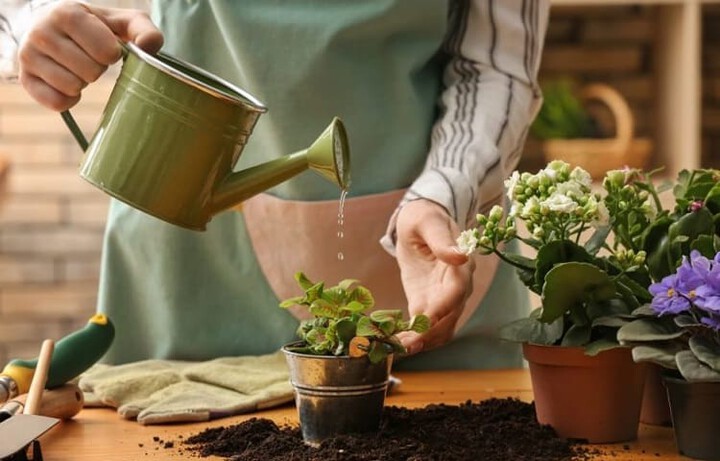Liquid

Solid (Granular)

Solid house plant fertilizers are found in two specific types, which are granular pellets or compressed fertilizer spikes.
The pelletized granular fertilizer is sprinkled on the surface of the soil. The compressed fertilizer spikes are pushed into the soil to come into close contact with the roots of the plant.
The best of these granular solid house plant fertilizers are made from naturally derived ingredients. This includes dehydrated worm castings, blood meal, sulfate of potash, bone meal, rock phosphate, limestone, and animal, mineral, and plant-based ingredients.
Synthetic or chemical-based granular fertilizer is also available for houseplants; however, if you are more into using organic fertilizers, then you should avoid them. One way to tell a synthetic fertilizer apart from an organic one is that the synthetic fertilizer will not contain an ingredient list at all.
Organic

Organic fertilizers are made from ingredients such as fish emulsion, liquid kelp, compost tea, bonemeal, plant extracts, rock phosphate as well as human acids, to name a few.
The bonus is that you don’t need to go out and buy organic fertilizers because you can create your own. In nature, the decomposition of organic matter will create a natural fertilizer.
Ultimately, these natural ingredients that can be decomposed into the soil improve the quality and texture of the soil as well. It also increases the soil’s ability to hold water, reduces erosion from wind and water, and decreases compaction and crusting of the soil, all while raising the soil’s pH.
Slow-Release
Slow-release house plant fertilizers are also known as time-released fertilizers. They are made from a synthetic source of nutrients, and the nutrients are encapsulated in a coating.
Ultimately, this coating breaks down slowly and releases in low doses over a long period of time.
So what it actually means from a practical point of view is that you will be fertilizing your plants less frequently. So that’s convenient; however, one of the drawbacks is that they’re not made from eco-friendly ingredients.